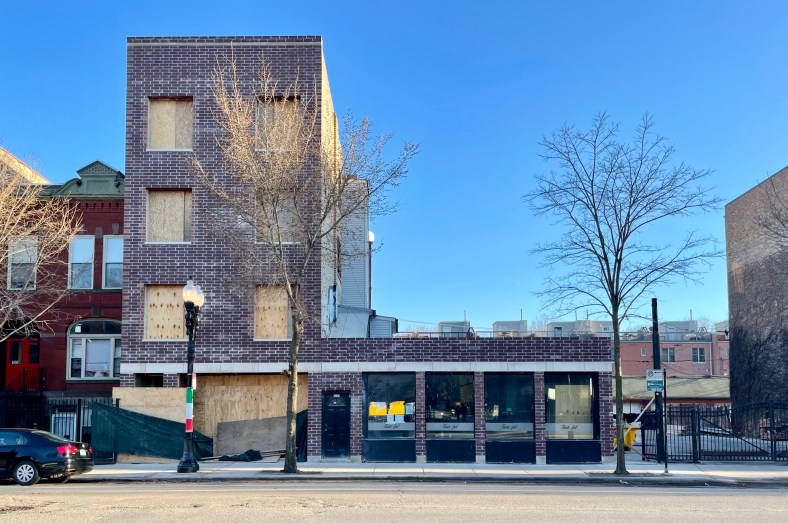Chicago should have a rental registry, a database of dwelling units that are rented to tenants, for at least two reasons:
- The city can know things about the rental units, including how much they cost, where they are, and if any are vacant and could be occupied if only people knew they were available and how to get in touch with the owner.
- The city can know who the owners are and contact them to issue citations or advise them, or fill out for them, emergency rental assistance during pandemics and other times of necessity.
Building and administering a rental registry from scratch would be very expensive – probably tens of millions to start and more than one million annually.
I propose a kludge that uses existing databases and modifies existing standard operating procedures amongst a small group of Cook County and Chicago agencies. A kludge is a workaround. It has other meanings and an uncertain etymology.
An ideal rental registry helps solve at least four problems:
- Identify who owns a rental home
- The number of rental units are in a building
- Rental price
- Rental unit availability [see my other blog post about counting vacant units]

The kludge has four parts
1. Incorporate data about the number of units declared on Real Estate Transfer Tax forms (which in Cook and many other counties are transmitted to the Illinois Department of Revenue digitally).
There is already a city office that reviews or audits these forms looking for instances where the buyer or seller incorrectly claimed certain exemptions from RETT, because of how the city can lose revenue. That office can also enforce that the number of units was correctly entered on the form.
2. For banks that hold city deposits, amend legislation to require that their newly issued or refinanced mortgages specify the number of units in the required submitted documentation. The ordinance that regulates banks that hold city deposits was amended a few years ago to require that they report how many loans they issue in Chicago for both commercial and residential properties.
Databases 1 and 2 are checks for each other.
3. “Hire” the Cook County Assessor’s Office to create and operate the database for the unit count data from 1 and 2 (likely as an augmentation of their existing database).
The database would also store any data the CCAO collects through the commercial valuation data they obtain from third party sources as well as from the owners who volunteer it (Assessor Kaegi is already collecting and publicly publishing this information).
At this point, with features 1, 2, and 3, we are assembling a pretty broad but incomplete record of where rental units are. It will be come more complete over time as properties transfer (sell) and the details of the transfer (sale), and the properties themselves, are recorded.
It doesn’t have a clue as to the rental prices.
4. The Cook County Assessor’s Office creates new property classifications. Property classifications allow for the comparison of like buildings for the purpose of establishing assessed values for all properties that are not tax exempt.
One of the most common classifications in Chicago is “2-11”, for apartment buildings with two to six units. This means that, generally, the value of the ubiquitous two-flats and three-flats get compared to other each other and sometimes to four-flats, etc.
I suggest that there should be a few new property classifications, but I have only one idea so far: classify limited equity and Chicago Housing Trust properties differently.
Bickerdike is one organization that built a lot of limited equity row houses and detached houses in the 1990s and 2000s but I am not aware of a publicly accessible database identifying them.
These houses represent permanently affordable housing and we should have a better system to track them!

How broad is the kludge?
- Using the Real Estate Transfer Tax data from 2022 Q1 to Q3, there were 3,550 buildings in Chicago having 22,217 units transferred. (I don’t know how many were arms length transactions, meaning they were sold to new owners.)
- In the CCAO’s apartments data collected for the Rogers Park Township, there is semi-detailed information about 715 buildings that have seven or more apartments comprising 18,541 units. Details include the unit size breakdown by bedroom count.
Chicago has 556,099 rented dwelling units in buildings with two or more units (according to the ACS 2021 1-year estimate). In my limited analysis I’ve already found data about 7.4 percent of them, and that’s only for part of the city [1].
Notes, limitations, and updates
[1] There may also be duplicates between the buildings in the RETT database and the CCAO apartments dataset.
These databases would not have information about detached (“single family”), single-unit semi-detached (rowhouses and townhouses), and condos used as rentals. This severely limits the coverage of information. As it stands, Chicago Cityscape has data coverage of unit count information for about 37 percent of multi-family (apartment) buildings.
5th Ward Alderperson Desmond Yancy proposed an ordinance that would establish a rental registry (O2023-0004085). The rationale for such is shown in the screenshot below. (Go directly to the ordinance’s PDF.)

